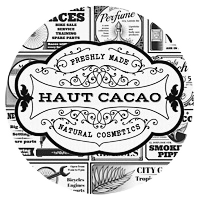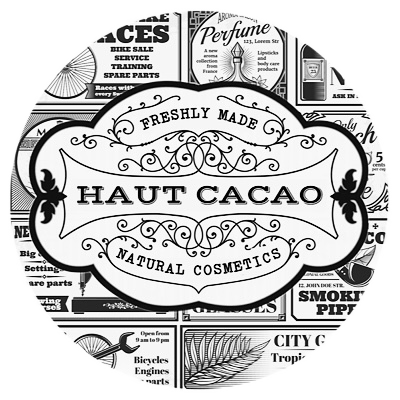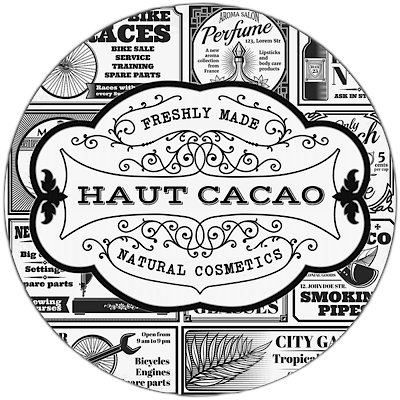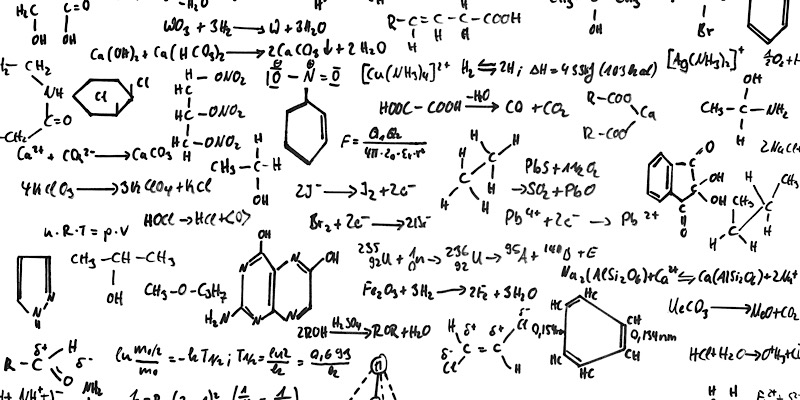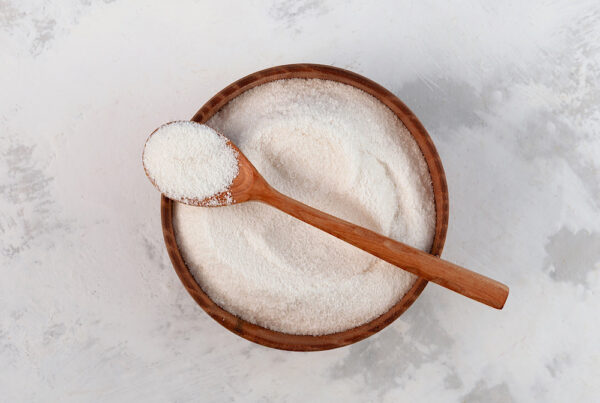How did we get here? Why does clean makeup now equal ingredients made from dioxane? I don’t understand….I don’t expect the average consumer to know this but I do wonder who dropped the ball in the communication between the formulators of a makeup product and the marketing team. If you would like to see proof of this, here is a very popular ‘clean’ makeup brand’s ‘natural’ gel foundation ingredient list:
polysorbate 60
polysorbate 60 is right in the middle of the above natural gel foundation ingredient list and it is commonly added to ‘natural’, ‘clean’ makeup formulas. It is used because it is the most inexpensive choice, it creates an attractive texture, and it is allowed to be used even though polysorbates have been found to contain dioxane. What is dioxane?
Dioxane is a heterocyclic organic compound classified as an ether. It is a colorless liquid with a faint sweet odor similar to that of diethyl ether.
-
While polysorbate 60 is generally considered safe at low concentrations, studies have shown that higher amounts (5% or more) can cause moderate skin irritation, and there is a potential for sensitization, particularly in people with sensitive or reactive skin147. Even though most cosmetic products use it below these levels, individuals prone to allergies or skin reactions should exercise caution.
-
Allergic and Hypersensitivity Reactions: Polysorbates, including polysorbate 60, have been associated with immediate-type hypersensitivity reactions in rare cases, such as skin rashes or even more severe responses in highly sensitive individuals37. Those with a history of allergies to similar compounds should be especially vigilant.
-
Contamination Concerns: The manufacturing process of polysorbate 60 involves ethylene oxide, which can lead to trace contamination with potentially harmful substances. For example, related polysorbates (like polysorbate 20) have been found to contain 1,4-dioxane, a byproduct classified as a carcinogen, raising concerns about cumulative exposure over time57. While polysorbate 60 is not specifically cited for this contaminant in the provided sources, the risk is similar due to the shared manufacturing process.
-
Environmental and Health Impact: The production of polysorbate 60 raises ecological questions because of the chemicals involved, such as ethylene oxide, which have known environmental and health risks. People concerned about sustainability or minimizing exposure to synthetic chemicals may prefer to avoid it7.
why polysorbate instead of a natural alternative?
wholesale cost of polysorbate 60 is generally attractive to formulators. Polysorbate 60 is widely available in bulk at competitive prices from multiple suppliers, making it cost-effective for large-scale manufacturing in cosmetics, personal care, food, and pharmaceutical products145. Its affordability is one of the reasons it is so commonly used as an emulsifier and solubilizer in a wide range of formulations.
Bulk purchasing options, such as 40 lb containers, are specifically marketed for large-scale or wholesale buyers, further reducing per-unit costs14. This accessibility and low price point, combined with its multifunctionality and effectiveness, make polysorbate 60 not only a technically attractive ingredient but also an economically smart choice for formulators.
Someone may want to stay away from polysorbate 60 for several reasons, primarily related to potential contamination, health, and gastrointestinal concerns:
-
Contamination with Harmful Impurities: Polysorbate 60 can contain trace amounts of ethylene oxide and 1,4-dioxane, substances known to the State of California to cause cancer and reproductive harm23. These impurities are byproducts of the manufacturing process and, while present at very low levels, raise concerns for those seeking to avoid all potential carcinogens or reproductive toxins.
-
Potential for Gastrointestinal Effects: Some research suggests polysorbate 60 and similar emulsifiers may compromise gastrointestinal function by increasing intestinal membrane permeability9. There is also concern that these emulsifiers could disrupt the mucous layer lining the gut, potentially contributing to digestive issues or inflammation11.
-
Irritation and Sensitization Risks: While polysorbate 60 is generally considered low risk for skin or eye irritation, some individuals may experience mild irritation, especially with frequent or high exposure347.
-
Precaution for Sensitive Groups: People with sensitive skin, allergies, or those who are immunocompromised may prefer to avoid polysorbate 60 due to its synthetic nature and the possibility of minor irritation or allergic reactions3.
-
Preference for Natural Ingredients: Individuals who prioritize natural or minimally processed ingredients may avoid polysorbate 60, as it is a synthetic surfactant and emulsifier derived through chemical processing.
-
Regulatory and Data Gaps: While most safety reviews conclude polysorbate 60 is safe at current use levels, there are some data gaps and ongoing discussions about long-term effects and safe concentration limits in certain products38.
While polysorbate 60 is widely regarded as safe for most people and is not classified as acutely toxic or carcinogenic, those concerned about trace contaminants, gut health, or synthetic additives may choose to avoid it, especially when natural alternatives are available3911.
water
I am not saying that water is not clean. However, here is why I do not use water. It seems deceitful that a product can be almost all water and yet the consumer is not made aware of this. If the consumer really loves the texture of the water-based formula, the final price should still be less in my opinion. I did some research into this exact formula and the above product formula is 75% water. So you are paying $40 cdn for 30ml for this product except for 25%. So you are paying $31 cdn for 22.5ml of water. Some may say water is needed as some ingredients are only soluble in water. That may be the case but you can choose alternatives to water which are high-performing and unique AND would also better reflect the cost of the final product. A client can make a water-based mist and it is free except for the packaging and the cost of 22.5ml of distilled water. Water also easily breeds bacteria so the more water, the more preservative needed.
why water instead of aloe juice?
Water is the most common base in skincare because it is inexpensive, abundant, and highly versatile for formulators. It acts as a universal solvent, dissolving many active ingredients and helping to create lightweight, spreadable textures in creams, lotions, and gels. Water also helps increase the volume of products at a low cost, which is attractive from a manufacturing and pricing standpoint12.
However, water itself cannot penetrate the skin deeply and evaporates quickly, providing only temporary surface hydration12. In contrast, alternatives like aloe vera juice or gel offer superior hydration and additional skin benefits. Aloe vera contains unique polysaccharides that form a protective barrier, lock in moisture, and reduce transepidermal water loss (TEWL). It also penetrates the skin more effectively than water and delivers vitamins, minerals, amino acids, and antioxidants that nourish, soothe, and repair the skin12467.
Hydroxyethyl Acrylate/Sodium Acryloyldimethyl Taurate Copolymer
First of all, how can a clean, natural ingredient have a name this long? Experts note that residual monomers or impurities from the manufacturing process of Hydroxyethyl Acrylate/Sodium Acryloyldimethyl Taurate Copolymer such as acrylates-can sometimes be present in trace amounts and may contribute to sensitization or allergic reactions in predisposed individuals15. Acrylate allergies, while uncommon, can cause symptoms like itching, burning, scaling, or hives in those who are susceptible5. This ingredient is produced through a process called copolymerization, where two main monomers-hydroxyethyl acrylate and sodium acryloyldimethyl taurate-are chemically combined to form a stable polymer network62.
why Hydroxyethyl Acrylate/Sodium Acryloyldimethyl Taurate Copolymer instead of more natural alternatives?
Hydroxyethyl Acrylate/Sodium Acryloyldimethyl Taurate Copolymer is often chosen over more natural alternatives for several practical and performance-driven reasons:
-
Superior Texture and Sensory Experience: This synthetic copolymer gives skincare products a light, non-greasy, and pleasant texture that is highly valued by consumers. It creates a smooth, satiny finish and enhances the overall feel of creams, lotions, and serums, which can be harder to achieve with some natural thickeners or emulsifiers8.
-
Exceptional Stability and Versatility: Synthetic emulsifiers like this copolymer are highly effective at stabilizing emulsions and controlling viscosity, ensuring products remain homogeneous and perform consistently over time. Natural emulsifiers, while more eco-friendly, can be less stable-especially under challenging conditions like high salt, heat, or long storage periods789.
-
Ease of Formulation: Hydroxyethyl Acrylate/Sodium Acryloyldimethyl Taurate Copolymer is easy to work with, as it can be processed hot or cold and is compatible with a wide range of ingredients. This flexibility simplifies manufacturing and allows formulators to create a variety of product types efficiently8.
There are natural alternatives which are valued for their biodegradability, sustainability, and compatibility with clean beauty standards. While they may have slightly different textural or sensory profiles compared to synthetic copolymers, advances in natural polymer technology are closing the performance gap41.
The general process involves:
-
:
-
Hydroxyethyl acrylate is typically derived from the reaction of acrylic acid (or its esters) with ethylene oxide.
-
Sodium acryloyldimethyl taurate is synthesized by reacting 2-methyl-2-propen-1-amine with 1-propanesulfonic acid in the presence of sodium, resulting in a sulfonated, water-soluble monomer51.
-
-
:
-
The two monomers, hydroxyethyl acrylate and sodium acryloyldimethyl taurate, are mixed in water or another suitable solvent.
-
A free-radical initiator (such as ammonium persulfate or other peroxide compounds) is added to start the polymerization reaction.
-
Under controlled temperature and agitation, the monomers react to form long-chain copolymers, resulting in a viscous, stable gel or solution6.
-
-
:
This copolymer is valued in cosmetics for its ability to stabilize, thicken, and improve the texture of products. Experts note that residual monomers or impurities from the manufacturing process-such as acrylates-can sometimes be present in trace amounts and may contribute to sensitization or allergic reactions in predisposed individuals15. Acrylate allergies, while uncommon, can cause symptoms like itching, burning, scaling, or hives in those who are susceptible5.
Ethylhexylglycerin
it has been reported as a contact allergen and can cause dermatitis or skin irritation in susceptible individuals234. People with sensitive skin or existing skin conditions are more likely to experience adverse reactions such as redness, itching, or rashes when exposed to this ingredient, especially in leave-on products or at higher concentrations127.
why Ethylhexylglycerin and not a more natural alternative?
Ethylhexylglycerin is generally more budget-friendly than most natural alternatives used as preservatives in skincare and cosmetic formulations. According to industry comparisons, natural preservatives-such as vitamin E (tocopherol), grapefruit seed extract, rosemary extract, and radish root ferment filtrate (Leucidal®)-often require higher usage levels to achieve similar antimicrobial efficacy, which increases the overall cost of formulation9. In contrast, ethylhexylglycerin is effective at low concentrations (typically 0.5–1%), making it more cost-efficient79.
A direct comparison shows:
-
Natural preservatives: Higher overall costs, shorter shelf life, and may complicate formulations due to the need for higher doses and potential impact on product appearance or texture9.
-
Ethylhexylglycerin (and blends like phenoxyethanol + ethylhexylglycerin): Lower cost impact, longer shelf life, and minimal effect on product aesthetics97.
In summary, ethylhexylglycerin is typically cheaper than natural alternatives when considering effective dosage, shelf life, and formulation flexibility, making it an attractive option for formulators seeking both efficacy and cost control97.
Ethylhexylglycerin is synthesized through a two-step chemical process starting from 2-ethylhexanol:
-
:
-
2-ethylhexanol is mixed with a catalyst (such as sodium hydroxide or a phase transfer catalyst).
-
Epichlorohydrin is added dropwise to this mixture under cooling, typically at 20–60°C, and the reaction is allowed to proceed for several hours. This forms 2-ethylhexyl glycidyl ether62.
-
After the reaction, the product is filtered, washed, and distilled to purify the glycidyl ether64.
-
-
:
-
The 2-ethylhexyl glycidyl ether is then reacted with water (sometimes in the presence of an organic solvent and additional catalyst) under controlled conditions, usually under a nitrogen atmosphere for 20–40 minutes148.
-
This step opens the epoxide ring, producing ethylhexylglycerin65.
-
The mixture is then neutralized, washed, and purified, often by molecular or short-path distillation at reduced pressure, to yield high-purity ethylhexylglycerin as a colorless, odorless liquid457.
-
Ethylhexylglycerin is made by first reacting 2-ethylhexanol with epichlorohydrin to form 2-ethylhexyl glycidyl ether, then hydrolyzing this intermediate with water to create ethylhexylglycerin, followed by purification steps such as washing and distillation654.
ascorbyl tetraisopalmitate
There are several reasons someone might choose to avoid Ascorbyl Tetraisopalmitate in skincare:
-
Potential for Skin Sensitization and Allergic Reactions:
Clinical and animal studies have shown that Ascorbyl Tetraisopalmitate can cause skin sensitization in some individuals. In animal testing, a strong sensitization rate (80%) was observed, and there are documented human case reports of acute contact dermatitis and positive patch test reactions to this ingredient, even at low concentrations5683. The substance is classified under the Globally Harmonized System (GHS) as potentially causing allergic skin reactions (H317)8. -
Environmental Concerns:
Ascorbyl Tetraisopalmitate is classified as “very toxic to aquatic life with long lasting effects” (H410). This means improper disposal or environmental release could harm water ecosystems, making it a less eco-friendly choice compared to some alternatives8. -
Not Universally Irritating, But Risk Exists:
While most people tolerate Ascorbyl Tetraisopalmitate well and it is not generally considered an irritant at typical use levels, those with sensitive skin or a history of allergies may be at higher risk for reactions438. -
Regulatory and Handling Precautions:
Safety data sheets recommend avoiding skin contact if you are sensitive, wearing protective gloves, and preventing environmental contamination8.
why ascorbyl tetraisopalmitate instead of natural alternatives?
it is generally more affordable and more cost-effective for formulators.
-
Synthetic preservatives like ethylhexylglycerin (often used in combination with phenoxyethanol) are widely recognized as more budget-friendly than natural alternatives. They are effective at low concentrations (typically 0.5–1%), which further reduces the cost per unit of product47.
-
Natural preservatives (such as vitamin E, rosemary extract, radish root ferment/Leucidal®, and AMTicide Coconut) tend to be significantly more expensive. For example, Leucidal (a popular natural preservative system) can cost around $375/kg, while synthetic options like phenoxyethanol are about $1.70/kg and parabens even less678.
-
Cost impact: Natural preservatives often require higher usage rates to achieve the same level of antimicrobial protection, which increases the total formulation cost710.
You may want to avoid Ascorbyl Tetraisopalmitate if you have sensitive skin, a history of allergies, or are concerned about environmental toxicity. While it is effective and generally safe for most users, the risk of skin sensitization and its environmental impact are notable drawbacks5683.
